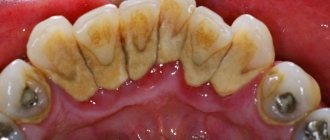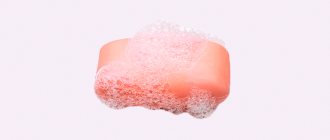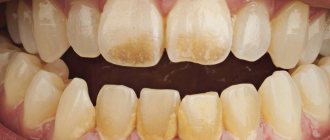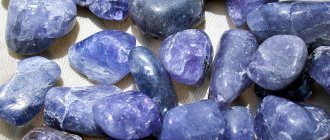Share on social media networks:
Currently, there are a lot of different cleaning and dishwashing products, such as fairies, but not all of them are equally safe. Many housewives prefer time-tested remedies, such as boiling or soda and hydrogen peroxide. These are universal helpers in any kitchen, and not only. They are used for medical and cosmetic purposes, to remove various stains from various surfaces. But today we will talk about their benefits in the kitchen, for example, how to use baking soda and hydrogen peroxide to clean dishes at home.
Benefits when used at home
Even before household products appeared, housewives used folk remedies to keep the kitchen clean. Popular among them were salt and peroxide. The household benefits of these products are as follows:
- effective fight against fat and old stains;
- environmental cleanliness;
- absence of harmful chemicals or allergens, which is important if there are children or allergy sufferers in the house;
- effective odor removal;
- disinfection, elimination of germs or bacteria;
- creating a whitening effect.
Baking soda in combination with oxygen peroxide helps remove complex stains and keep utensils and household appliances clean.
Attention! It is recommended to remove plaque or grease immediately after it forms. Fresh stains can be removed easier and faster.
We clean carpets with improvised materials
Cleaning home carpets without using chemical “helpers” is quite difficult. Old, stubborn stains are especially difficult to remove. But there is a folk method that will help overcome both fresh pollution and those that have been living there for a long time. Soda with hydrogen peroxide has long proven its effectiveness in this case.
When liquid is spilled on the carpet, you must immediately remove the excess using napkins. Mix two tablespoons of sodium bicarbonate with peroxide (3%), pour everything into a spray bottle. The mixture must be shaken well until the crystals are completely dissolved. Next we wet the dirt with this substance.
If the stain is fresh, you should immediately wipe it with a napkin and the dirt will be removed. Otherwise, spray it again and let it sit for twenty minutes. Thanks to this procedure, the problem is eliminated without much effort.
When the dirt has disappeared, blot off excess liquid with a cotton napkin or towel and dry with a hairdryer. Finally, you need to pour dry soda on this place and vacuum it well. It will help completely remove moisture and also eliminate unpleasant odors.
Action
Baking soda and peroxide react to form a clear liquid. The molecules of this alkaline solution act on acids and eliminate them. Due to bactericidal, microbes or bacteria contained on the surface are eliminated.
The two products can also be combined with salted water or alcohol. These components are added to a solution of soda and peroxide to enhance the cleaning effect or add shine. However, they must be washed with gloves to avoid irritation on the skin.
Beneficial properties of soda and hydrogen peroxide
The benefits of soda and peroxide have been known for a long time. These recipes come from our great-grandmothers. Since ancient times, housewives have used baking soda and hydrogen peroxide to clean dishes and more:
- There is soda in every home. This is a natural cleaner that does an excellent job of removing grease and other contaminants. It is environmentally friendly and non-toxic, absolutely safe for children and allergy sufferers. Among other things, it perfectly absorbs unpleasant odors.
- Hydrogen peroxide is also an excellent disinfectant; it kills all germs outright no worse than chlorine. At the same time, it has a whitening effect.
The combination of baking soda and hydrogen peroxide creates an excellent cleaner for cleaning burnt pots, ovens, and dishes in general.
Application options
The method of using a folk remedy to remove old stains depends on the type of dishes. It can be used for cleaning pots, pans, baking sheets, cutting boards or cutlery.
Cleaning the pan
Most often, when cooking, stains form on the outside due to exposure to gas or food splashes. If it was not possible to immediately remove the plaque, and over time the use of the dishes a layer of old fat has formed, then to remove it you need to do the following:
- Pour baking soda into a container.
- Gradually add hydrogen peroxide to it, stirring the mixture. You should get a consistency similar to gruel.
- Using a sponge, apply it to the damaged surface. Leave to absorb for 15-20 minutes.
- Rinse off the composition with warm water using a sponge. If necessary, you can further wash it with dishwashing detergent.
This processing method is not suitable for pans made of enameled steel; scratches may appear on it. To clean it, you need to pour a slurry of hydrogen peroxide and soda into warm water, then dip the dishes in it for 20-30 minutes, and then treat the surface with a soapy solution. This method is more effective for removing contaminants covering the bottom surface.
Cleaning the pan
A coating forms on the frying pan after each cooking due to the use of oil. It is not always possible to eliminate it after using detergent; a greasy film continues to remain. To eliminate it you need to:
- Fill the pan to the level where there is dirt. Add 1 tablespoon of soda to the liquid.
- Bring contents to a boil. To speed up this process and improve its efficiency, you need to cover the dish with a lid.
- Add 2 to 6 drops of hydrogen peroxide, depending on the degree of contamination or the volume of the pan.
- Turn off the fire. Leave to soak for 10-20 minutes.
- Drain the water-alkaline mixture and wash the pan with dishwashing detergent or soapy water.
After cleaning, rinse the pan thoroughly with warm water. If plaque has formed on the outside of the utensils, then you should pour the heated solution into a large container and place the contaminated utensils in it for 15-30 minutes.
Cleaning the baking tray
The baking tray is the most difficult to clean from grease. This is due to the fact that the preparation of the dish occurs under the influence of high temperatures from all sides. Because of this, plaque is absorbed better and faster. After the baking sheet has cooled, it already dries out quite a bit, and removing it is problematic.
An effective solution for this type of utensil consists of 100 grams of soda and 4 tablespoons of hydrogen peroxide. Additionally, you can add 1 teaspoon of dishwashing detergent. Cover the baking sheet generously with the cleaning solution, and after 30 minutes, wash off with a soft sponge and rinse.
Cleaning cutlery
Less commonly, forks, spoons or knives become coated with grease. Due to the oxidation reaction, it can settle on silver or bronze cutlery over time. You can eliminate it as follows:
- It is necessary to place foil on the bottom of the pan and distribute 2-3 tablespoons of soda evenly over it.
- Place cutlery on top of it.
- Pour water so that the liquid lightly covers the forks, knives or spoons. Add 3-5 drops of hydrogen peroxide.
More goodies: Quick and easy ways to clean stove handles from dirt and grease With quick and easy ways to clean stove handles from dirt and grease, you can achieve perfect...
If the greasy deposit has recently formed or is small in size, then you can mix soda with hydrogen peroxide so that you get a consistency similar to liquid gruel. Soak a cotton pad in it and wipe it with table water, then rinse it.
Cleaning the cutting board
Cutting boards made of plastic or wood are easy to use. An obvious drawback is that this material quickly absorbs unpleasant odors and grease deposits. To clean it, you need to moisten a soft sponge in a mixture of soda and peroxide and treat the dishes with it, then rinse with cool water. To remove old plaque, you need to keep it for 20-30 minutes in a solution of these components dissolved in water, then rinse with detergent.
How to achieve a clean kitchen
Using synthetic detergents in the kitchen is especially dangerous. It is impossible to guarantee that after washing the dishes, refrigerator or table, there are no leftovers. Contact of hazardous chemicals with food can cause severe food poisoning.
We recommend trying hydrogen peroxide and baking soda for cleaning dishes, kitchen appliances, sinks, and tables. This mixture has a strong whitening effect. It can be used to thoroughly clean ovens, burnt pots and pans. Baking soda can easily remove grease from the stove and microwave, wash pots, and add shine to forks and spoons. To prepare the mixture you will need 0.5 cups of baking soda, a few drops of liquid soap, and two tablespoons of medical peroxide. All ingredients must be mixed and whipped until it resembles whipped cream. Apply it, wait a few minutes. After this, the contaminated area should be rubbed with a hard sponge and rinsed with plenty of water.
The presented mixture is safe for any surface. You can use it to wash dishes made of any material. But it is not recommended to try too hard when cleaning Teflon, as scratches may remain.
Sodium bicarbonate and peroxide will be useful in the kitchen not only for washing pots. If you add a little soda to the water in which you are going to wash fruits and vegetables, all dangerous substances from the peel will quickly be removed. But after the procedure, do not forget to rinse them with water.
A safe solution made from homemade ingredients will help disinfect and destroy all dirt on cutting boards. They need to spray the equipment well, leave for half an hour and rinse with water. This solution is also effective for cleaning freezers.
Each time you wash kitchen utensils, add fifty grams of hydrogen peroxide to the dishwasher. This will help her wash and disinfect dishes better. And to clean kitchen sponges, soak them in a solution for fifteen minutes, for the preparation of which the components (bicarbonate and peroxide), taken in equal parts, are mixed with water.
We fix bathroom problems
One of the problematic areas of the house in terms of cleanliness is the bathroom. This place should be clean and safe, but achieving this is not so easy. Traditional methods will come to the rescue here too.
A solution of soda and perhydrol with water can destroy dangerous fungus in the bathroom that appears due to excess moisture. Walls and ceilings are treated with it. A common problem for housewives is washing shower curtains. Plaque constantly settles there and fungus grows. To wash it, pour a bottle of medical liquid into water, add a little bicarbonate and let it sit for thirty minutes, then wash. The result will not upset even the most inveterate cleaners. Not only will traces of plaque disappear, but also stale odors.
The same method will help you easily rid your plumbing fixtures of rust and soap residues. Apply the product to the surface, let stand for about half an hour, rinse with a sponge and water.
The effectiveness of baking soda and peroxide as a means of cleaning the entire house is undeniable. It will help housewives get rid of fresh stains, old dirt, mold and rust. In addition, do not forget that this method is much cheaper and safer than store-bought ones. But everyone has the right to make their own decision - buy many expensive bottles in the store, or make a cleaning substance from scrap materials.
Traditional methods in the fight for cleanliness
Some housewives, caring for the health of their family, decided to abandon purchased hygiene products. They believe that it is safer to use traditional methods when cleaning. A particularly effective cleaning agent is sodium bicarbonate - ordinary baking soda, which is found in every home.
Hydrogen peroxide is not only a medical liquid, it is used in many aspects of life. It is an excellent antiseptic and removes dirt. Previously, housewives used it to wash dishes, treat kitchen tables, and clean carpets. It was also used to treat a cold throat.
Peroxide combined with baking soda will help keep your home clean. This combination has a number of positive qualities:
- efficiently cleans carbon deposits from any materials;
- kills all types of microbes;
- perfectly dissolves fat;
- removes unpleasant odor;
- removes rust from taps;
- fights stubborn stains on any materials;
- does not damage surfaces in kitchens and bathrooms.
You should use rubber gloves when handling this mixture as it may cause harm to your hands, causing irritation, rashes, or dry skin.
Burnt frying pan
It is always difficult to wash off greasy deposits on a frying pan, especially after long use - it seems that the fat remains on the surface. When using hydrogen peroxide with baking soda, this sensation does not occur.
How to use:
- fill the frying pan with water, put on fire;
- stir 1 tbsp. l. soda powder;
- heat to a boil;
- pour in a little peroxide (the number of drops depends on the volume - 3-5 drops);
- turn off the heat and leave the pan to cool;
- wash off using a sponge and rinse.









